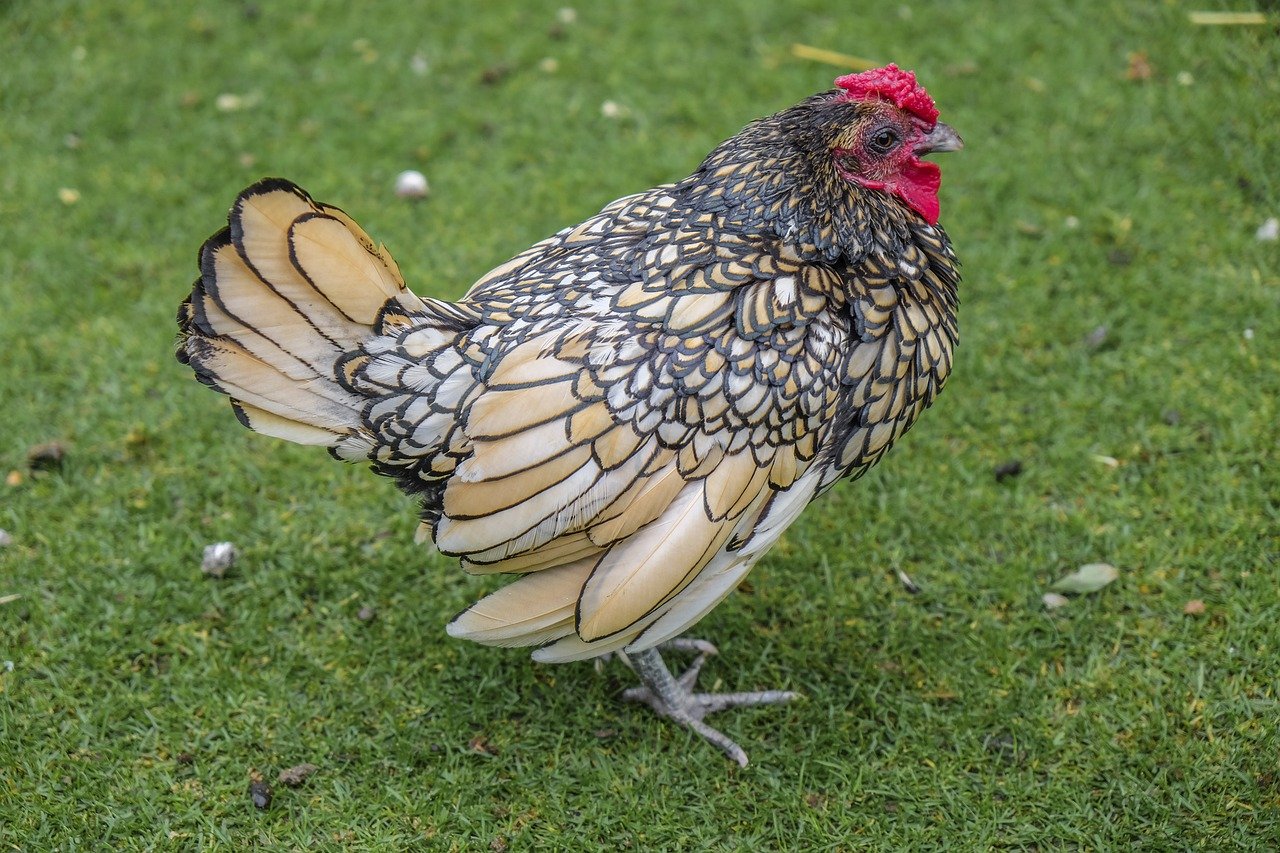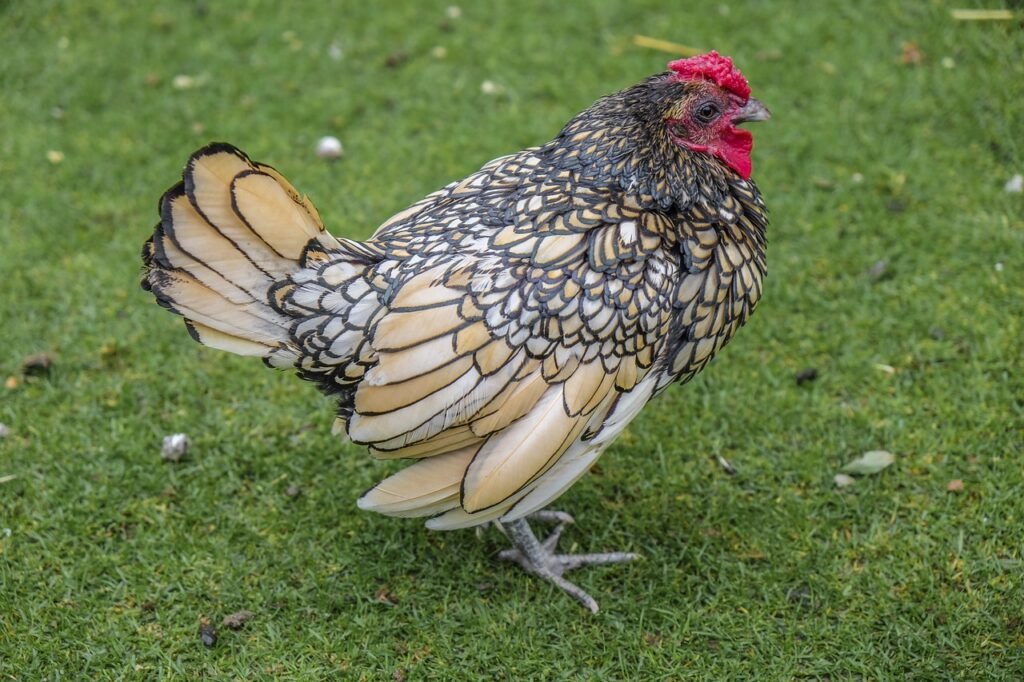
Intro
The idea of raising backyard chickens can be an exciting venture for any beginner. Not only does it provide a sustainable source of fresh eggs, but it also gives you the opportunity to care for these charming creatures. This comprehensive guide is designed to help you navigate the world of backyard chickens.
Starting Your Backyard Chicken Journey: The Essential Supplies

Venturing into the world of backyard chickens begins with assembling the necessary supplies. You’ll first need a chicken coop, which serves as the secure shelter for your flock, protecting them from potential predators and extreme weather. The coop should be spacious enough to accommodate your chickens comfortably and facilitate their natural behaviors.
Nesting boxes are a key component of the coop, providing a private and comfortable space for your chickens to lay eggs. Make sure to have enough nesting boxes to accommodate your flock size – generally, one nesting box for every 3-4 hens is a good rule of thumb.
Next on the list are feeders and waterers. Feeders are essential for providing your flock with their daily feed, and waterers ensure your chickens always have access to clean, fresh water. Opt for feeders and waterers that minimize waste and can be easily cleaned to maintain good hygiene.
Equally important is chicken wire or fencing to enclose your chickens’ outdoor space, offering them freedom to roam while keeping them safely contained. Look for a robust wire that can withstand harsh weather and deter predators.
Bedding, usually in the form of wood shavings, straw, or sand, is another must-have for the coop. It absorbs droppings and reduces odor, ensuring the coop stays clean and comfortable for your chickens.
Last but not least is chicken feed. The type of feed you’ll need will depend on the life stage of your chickens, from starter feed for chicks to layer feed for egg-laying hens. Always choose high-quality feed that meets the nutritional requirements of your flock.
Remember, each of these supplies plays a vital role in the overall health and happiness of your backyard chickens. By ensuring you have the right supplies from the onset, you’re setting the stage for a successful backyard chicken journey.
Choosing Your Chickens: What Breed is Right for You?

Deciding on the perfect breed for your backyard chicken venture is a crucial step in establishing your flock. A multitude of chicken breeds exists, each with its unique traits and characteristics. Therefore, your choice should be guided by what you want to achieve with your flock.
Are you interested in chickens primarily for their egg-laying prowess? Then consider breeds like the Rhode Island Reds or Sussex, which are renowned for their high egg production. Some breeds lay white eggs, some brown, and others, like the Easter Egger, can lay a variety of colorful eggs.
Maybe you’re looking for more of a dual-purpose breed, which can be used for both egg-laying and meat production. In that case, breeds like the Plymouth Rock and Wyandotte are good choices. These breeds are known for their robust size and substantial egg-laying capabilities, making them ideal for a dual-purpose backyard flock.
Perhaps you’re drawn to chickens for their distinctive aesthetics or friendly temperament. The Silkie with its fluffy plumage and docile nature is an endearing favorite among many backyard chicken keepers. Alternatively, the Araucana with its unusual tufted ears and blue eggs might add some exotic flair to your flock.
Whatever your preference, it’s critical to research and understand the distinct characteristics of each breed. Consider the climate of your location as some breeds are better suited to cold or hot climates. Also, consider the space available in your coop and run, as some breeds require more room than others.
Remember, different breeds can have varying temperaments, with some being more docile and others more active or even aggressive. Knowing what to expect will allow you to better manage your flock and ensure harmony among your chickens.
Choosing the right chicken breed is more than just a practical decision. It’s a chance to form a flock that matches your personal preferences and lifestyle. With a well-chosen breed, your backyard chicken venture can bring you joy, fresh eggs, and potentially even some delicious home-raised meat. So take the time to choose wisely and enjoy the process. After all, these feathery friends are likely to be part of your life for several years to come.
Understanding the Life Stages of Chickens: From Chicks to Layers

Just like any other living creature, chickens also undergo several stages of growth and development, from being adorable little chicks to becoming productive layers. Understanding these stages is vital for providing proper care and meeting their needs at each phase.
Chicks, the earliest stage of a chicken’s life, require specific care. Once they hatch, chicks are usually kept in a brooder, a warm and safe enclosure that mimics the conditions under a mother hen. For the initial weeks, a heat lamp is crucial to maintain the right temperature. Usually by the time they are about 6 weeks old, chicks will have developed their feathers. This is an indication that they are ready to leave the brooder and be moved to a coop.
Following the chick stage, they transition into the pullet stage. The term “pullet” refers to a young hen that has not yet started laying eggs. This stage typically begins when the chicken is about 4 to 5 months old. During this phase, the pullets continue to grow and mature while their bodies prepare for egg production. It’s during this stage that you may notice changes in their behavior and physical appearance, as they begin to exhibit more of the traits of adult chickens.
The final stage in a chicken’s lifecycle is becoming a layer. Layers are mature hens that have started to produce eggs, typically around the age of 5 to 6 months. When your pullets transition to becoming layers, this is an exciting time. You will begin to find fresh eggs in your nesting boxes, a clear sign that your chickens have reached adulthood.
In essence, from fluffy chicks to mature layers, each stage of a chicken’s life requires specific attention and care. Understanding these stages and their unique needs can help ensure your flock remains healthy and productive. Providing appropriate feed, a safe and comfortable environment, and attentive care tailored to each stage will significantly contribute to your success as a backyard chicken owner.
Feeding Your Flock: What to Feed Chickens at Different Life Stages
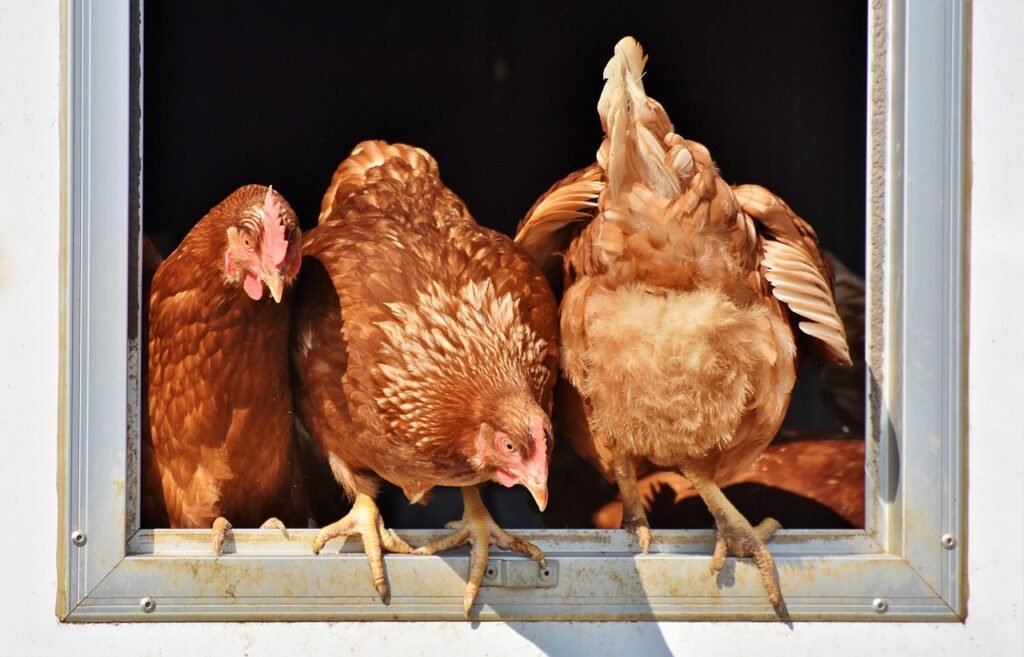
Understanding what to feed your chickens at different life stages is essential for their growth, health, and productivity. During the earliest phase of life, chicks should be given starter feed. This feed is rich in protein, essential for supporting the fast-paced growth that chicks experience. This stage generally lasts until they are about 6 weeks old.
At this point, as the chicks transition out of the brooder and into the coop, their feed should transition as well. They are now ready for grower feed, which still provides a high protein content but slightly less than starter feed. This is because, at this stage, while they are still growing, the pace of their growth is not as rapid as during their first few weeks of life.
As the chickens mature, there comes the much-anticipated egg-laying phase. Once your pullets start laying eggs, usually when they’re about 20 weeks old, it’s time to switch them to layer feed. Layer feed is specially formulated with the right nutrients to support egg production. It is generally higher in calcium, which is essential for shell formation.
While commercial feeds are typically well-balanced to provide all necessary nutrients, you can also supplement their diet with kitchen scraps. Offering a variety of fruits, vegetables, and grains can be a healthy addition to their diet and can provide mental stimulation. However, ensure that these treats don’t make up more than 10% of their total diet to maintain nutritional balance.
It’s also crucial to mention the importance of clean, fresh water for your flock. Chickens need consistent access to water for digestion, temperature regulation, and overall health. Whether it’s hot or cold outside, ensuring your chickens have enough water should be a daily priority.
In summary, providing the right feed for each life stage is integral to raising a healthy and productive flock. From high-protein starter feed for chicks, transitioning to grower feed as they mature, and finally to layer feed for your egg-laying hens, each stage requires a unique dietary approach. Pair this with fresh water and occasional treats, and you’re well on your way to having a happy, healthy flock of backyard chickens.
Caring for Your Chickens: Preventing Disease and Maintaining Health
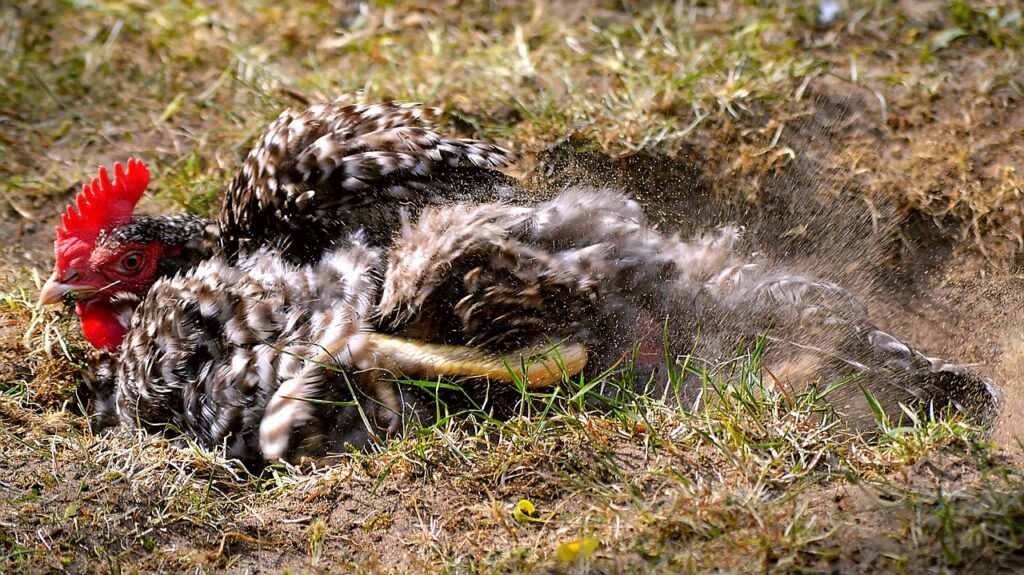
The overall health and wellbeing of your backyard chickens should be a top priority. Disease prevention starts with a clean, well-ventilated coop. Regularly changing the bedding and clearing out droppings minimizes the risk of harmful bacteria and parasites, which can lead to illness. Additionally, ensuring your coop has adequate ventilation helps to prevent respiratory issues.
Observation is another crucial aspect of maintaining a healthy flock. Monitor your chickens daily for any changes in their behavior or appearance that could indicate sickness or injury. Lethargy, loss of appetite, change in egg production, or visible signs like ruffled feathers, swollen eyes, or lameness are indicators that a chicken might not be in good health.
Alongside keen observation, developing a routine for health checks can be beneficial. Routinely checking for external parasites like lice or mites, examining their combs for a healthy red color, and inspecting their feathers for any missing or broken ones can help catch any issues early.
Proper diet, as we’ve discussed in the feeding section, also plays a significant role in disease prevention. A balanced diet strengthens the immune system and helps the chickens to ward off diseases. Be sure to provide them with the correct feed for their age and production stage, and supplement with healthy treats as needed.
Dust baths are a great way to keep your chickens healthy. It is a natural instinct that chickens have to clean themselves and fight off mites and pests. Make sure to provide an area where they can dig down into dirt. Or provide your own dust bath area by filling something with dirt, diatomaceous earth, and even wood fire ash for your birds to bathe in.
Additionally, practicing biosecurity measures can help prevent the spread of diseases within your flock. This includes isolating any new birds before introducing them to the rest of the flock, cleaning and disinfecting equipment regularly, and avoiding bringing diseases home by cleaning shoes and clothes after visiting other poultry farms.
In essence, keeping your flock healthy requires diligence and a proactive approach. By ensuring clean living conditions, monitoring their health, providing a balanced diet, and implementing vaccination and biosecurity measures, you can effectively guard your flock against disease and ensure their long-term health.
Reaping the Benefits: Harvesting and Using Your Fresh Eggs
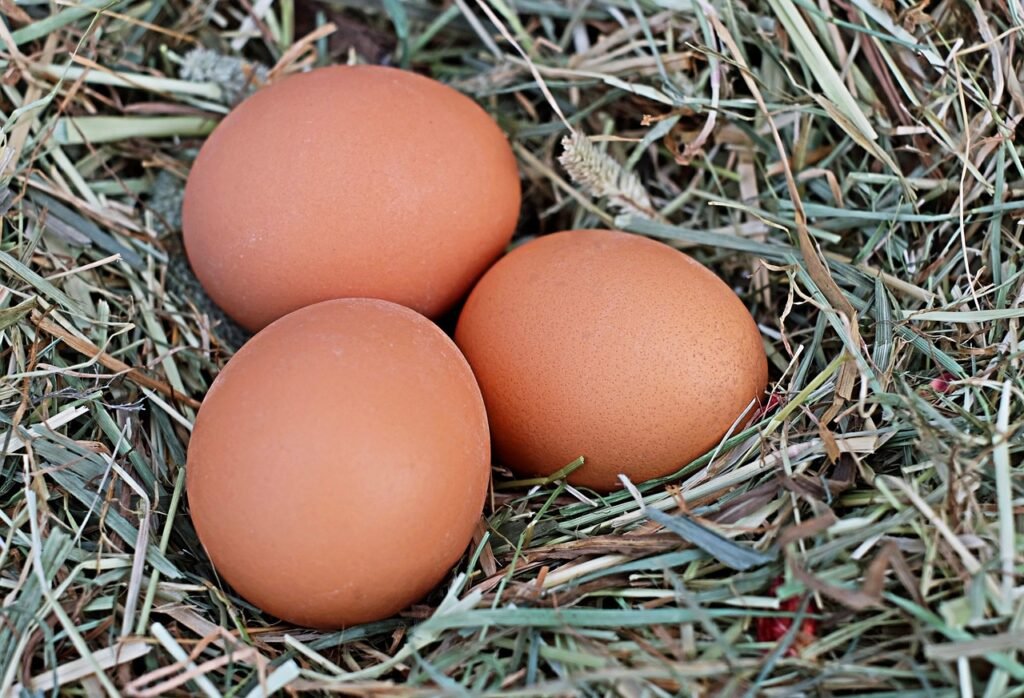
Once your hens have matured into productive layers, the moment you’ve been waiting for finally arrives – the harvesting of your very own fresh eggs. This rewarding aspect is the culmination of your hard work and dedication to your flock. Generally, hens are early risers and tend to lay their eggs in the wee hours of the morning. Hence, it’s a good practice to make your first visit to the nesting boxes early in the day.
Collecting the eggs daily is key. Regular collection ensures that none of the eggs spoil, and it also encourages your hens to continue laying. The thrill of finding these small treasures in the nesting boxes never really fades and is a testament to the health and happiness of your hens.
One of the remarkable benefits of raising your own backyard chickens is the quality and taste of the eggs they produce. Home-raised eggs are renowned for their superior freshness and flavor compared to store-bought ones. Their bright, robust yolks and firm whites offer a taste that is simply unparalleled. You’ll notice the difference whether you’re making a simple scrambled egg breakfast, baking a cake, or adding a boiled egg to your salad.
In conclusion, the experience of harvesting and savoring your own backyard chicken eggs is a gratifying reward that closes the loop on your backyard chicken venture. It is a testament to the care and attention you’ve given your chickens, a payoff for your dedication, and a delicious one at that. Each egg collected is not just a nutritious meal but a symbol of the delightful journey you’ve embarked on as a backyard chicken keeper.

